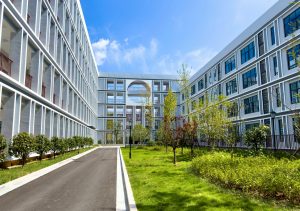Urban Development and Its Socioeconomic Implications
In the past few decades, urban development has been taking place at an unprecedented rate. Cities around the world have been constantly growing and expanding, bringing in new infrastructures, businesses, and people. This phenomenon of urbanization has had a significant impact on society, both positive and negative. As urban development continues to shape our cities, it is essential to understand its socioeconomic implications, how it affects different aspects of our lives, and what we can do to ensure it is sustainable for the future.
The Growth of Urban Development
Urban development refers to the growth and expansion of cities, including the construction of buildings, roads, and other physical infrastructure. This growth is a consequence of population increase and migration from rural areas to urban centers. According to the United Nations, the world’s urban population is expected to reach 68% by 2050, with most of the growth taking place in developing countries.
Positive Socioeconomic Implications
Urban development has brought numerous positive changes to society. The development of new infrastructures such as transportation systems and communication networks has made cities more connected and accessible. This has facilitated the growth of businesses, creating job opportunities and boosting the economy. As a result, urban areas have become centers of economic activity, attracting people looking for better job prospects.
Moreover, urban development has also led to improvements in living standards. Cities have better access to essential services like healthcare, education, and sanitation. The development of modern housing has also increased the comfort and quality of life for urban residents.
Negative Socioeconomic Implications
On the other hand, urban development also has its share of negative implications. The rapid growth of cities has put a strain on resources such as land, water, and energy, leading to environmental degradation and depletion. The increased demand for housing has also caused housing prices to rise, making it difficult for low-income families to afford decent housing.
Additionally, urbanization has also contributed to social issues such as income inequality and poverty. As cities grow, the gap between the rich and poor widens, causing social and economic disparities. This can lead to social unrest and political instability, which can further impact the economy.
Creating Sustainable Urban Development
To mitigate the negative socioeconomic implications of urban development, it is crucial to promote sustainable growth. Sustainable urban development involves creating cities that are environmentally, socially, and economically sustainable for future generations. This can be achieved through various strategies, including:
Urban Planning and Management
Proper urban planning is essential for sustainable development. It involves carefully designing and managing the growth of cities to ensure efficient land use, preservation of green spaces, and equitable distribution of resources.
Infrastructure Development
The development of green infrastructure, such as parks and green rooftops, can help mitigate the negative effects of urban development and improve the quality of life for residents. Other sustainable infrastructure includes public transportation, which can reduce the number of cars on the road, decreasing air pollution and congestion.
Social Inclusion
Inclusive urban development involves ensuring that all members of society, including marginalized groups, have access to essential services and opportunities. This can help reduce social disparities and promote a more equitable society.
Conclusion
Urban development has significant socioeconomic implications, both positive and negative. While it has improved our lives in many ways, it is crucial to ensure that it is sustainable for future generations. By implementing strategies for sustainable development, we can create cities that are livable, inclusive, and environmentally friendly.
As we continue to witness the growth of our cities, it is vital to remember the importance of balance and sustainability. By carefully managing urban development, we can create a better future for all.











